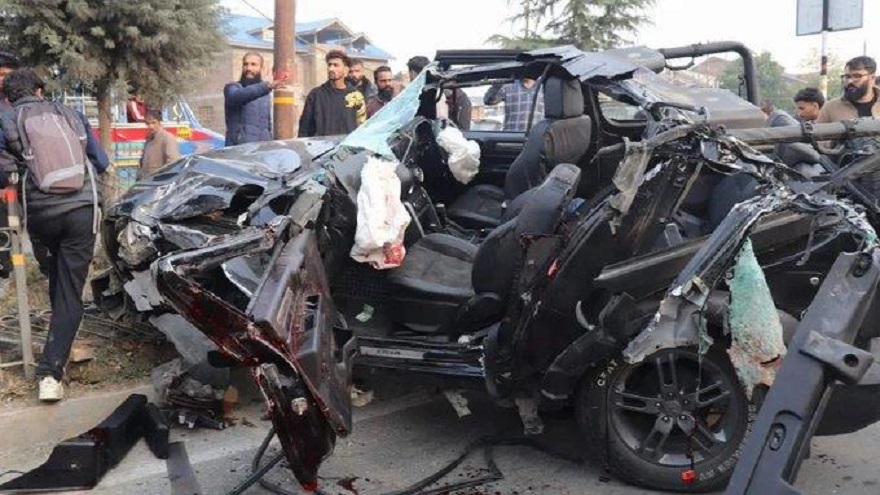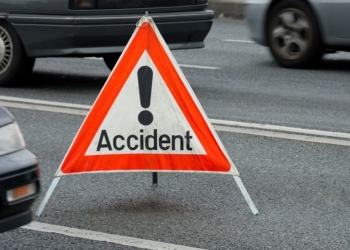
Recently, a tragic accident happened at Tengpora, on the Srinagar-Baramulla highway, killing teenagers who were in a speeding four-wheeler. The car appeared to have been racing some other car. This incident sparked widespread outrage across Kashmir. While some blamed the parents of the deceased, others blamed the authorities and still others blamed a stationary truck parked on the highway. The narrative of blame aside, what is clear is that the teenagers were driving fast and were clearly exhibiting risky and reckless behaviour. However, shaming or blaming teenagers is also not ideal.
Teenage or adolescence is a developmental phase of an individual’s life that is characterized by exploration, tendency to take risks and a natural tendency to look for various ways to gain more and more independence. Despite being expected as per the developmental phase, these traits can in some cases get expressed in risky ways. One such dangerous way through which teenagers might try to fulfill their need for exploration, risk taking and seeking independence is by going for illegal and age-inappropriate driving. While teenagers may understand the consequences sometimes, however, driving without the required legal age and skills often is taken by them as a sign of maturity and freedom. However, we all know that this dangerous behavior can have serious consequences such as road accidents, injuries and even deaths, example being the recent road accident on Tengpora Road at Srinagar. This issue is so complex that it can’t be handled just by administration or law enforcing agencies. It requires parents, teachers, mental health professionals, civil society, administrative bodies, and law enforcement to effectively put in a collective effort in order to properly address this issue that is far reaching and complex.
The Psychology behind Teenage Risk-Taking
Now let us look at the psychology and brain mechanisms that make a teenager vulnerable to take risks that can be life threatening. Adolescence is such an age at which an individual’s prefrontal cortex-the brain region responsible for impulse control, decision-making, and assessing consequences is still undergoing changes and development. Due to lack of adequate development especially in the prefrontal cortex area, teenagers might go for impulsive decisions, overlooking the dangerous consequences of their acts such as illegal driving while entirely focusing on the immediate rewards and pleasure of driving. Since this age is also characterized by the desire to be accepted by the peer group and since peer influence is very much obvious at this age, teenagers may try illegal driving to have a social standing among their peers and it can be an attempt from them to impress their peers by their independence. This behavior is driven further by some more deeper psychological issues such as low self-esteem, emotional distress, or a need for external validation.
The Role of Parents in Shaping Behavior
Children learn their values and behaviors primarily from their caregivers especially parents. In addition to providing a basic care, parents have an added responsibility in guiding their teenagers in taking responsible decisions. Parents need to have open communication with their teenagers about various aspects of life and one such aspect is understanding the legal and ethical consequences of driving without a license as such discussions might help a teenager at home to understand the gravity of such behaviors. Even after discussing the consequences of illegal age inappropriate driving with their teenagers, sometimes teenagers may still have a tendency to go for such behaviors. It is thus the responsibility of parents to model responsible driving behaviors and set clear guidelines such as prohibiting unsupervised access to motor vehicles. Few parenting styles also lead to such risky behaviors. Most common parenting styles that have been shown to have a strong correlation with such risk taking behaviors include permissive or neglectful parenting. On the other hand, authoritative parenting that involves, fostering trust and respect while maintaining firm boundaries can significantly reduce the likelihood of unsafe behaviors in their children such as illegal driving.
Schools as Platforms for Awareness
Teenager’s understanding of societal norms and responsibilities is highly influenced by the school where they go for the completion of their studies. In addition to giving a teenager a chance to understand different sciences and languages, school also have an important role to play in the life of a teenager. In addition to the emphasis on curriculum, school atmosphere can be used effectively to inculcate a sense of responsibility among teenagers towards self and society. One such responsibility school can inculcate in the minds of teenagers is an idea of road safety and their role and responsibility in this regard. This can be done by integrating education related to road safety into the curriculum so that when teachers talk and discuss about such things in the classroom set up, it will automatically help in making teenagers aware of the dangers of illegal driving and the importance of adhering to traffic laws. In addition to the integration of content related to road safety into the school curriculum, few more ways can also be used to make a lasting impact on the minds of teenagers related to such an issue. Programs that include interactive workshops, real-life case studies of road accidents, and discussions on decision-making can be very helpful in this regard. Teachers and school counselors also have an added responsibility to have a close observation and understanding about the students’ behavior studying in their school. They need to be vigilant and on the lookout for students who show risky behaviors and they need to offer early intervention in all such cases by taking parents of such students onboard. Collaborative efforts between schools and parents can create a supportive environment that discourages illegal driving.
Community and Civil Society’s Role
In addition to families and schools, establishing and maintaining road safety is also the responsibility of broader community. In this regard, awareness campaigns can be launched by civil society organizations and advocacy groups. Such awareness campaigns can help in highlighting the risks of illegal driving and can also help in establishing responsible behaviors related to road safety among teenagers. Members of civil society and community leaders can use social media, posters and events to reach to wider audience including teenagers and hence pay their role in reinforcing the importance of responsible driving. Community leaders can also encourage open dialogues about road safety, making it a collective concern rather than an individual issue.
Law Enforcement and Administrative Support
After discussing the role and responsibility of parents, teachers, and civil society, we can also try to discuss the role and responsibility of law enforcement agencies in establishing and maintaining road safety. Their role is very critical and actually very central in establishing safety in practical sense. They have a significant role in stopping illegal teenage driving. In this regard, various measures are already taken or can be taken by law enforcement agencies that can serve as deterrents such as regular patrols, checkpoints, strict enforcement of traffic. It is important to say that while punitive measures are important to curb illegal teenage driving, however, such measures alone are not sufficient. Police department must also engage in educational initiatives, such as hosting workshops for teenagers and parents about the consequences of illegal driving. Administrations should support these efforts by funding road safety campaigns, improving access to driver education programs, and implementing stricter regulations on the issuance of licenses.
Building a Collaborative Framework
Preventing illegal teenage driving is not the responsibility of any single group—it requires a unified approach. Parents, schools, communities, and law enforcement must work together to create a culture of accountability and awareness. By addressing the psychological, social, and practical aspects of this issue, these stakeholders can provide teenagers with the tools they need to make safer, more informed decisions.
Follow this link to join our WhatsApp group: Join Now
Be Part of Quality Journalism |
Quality journalism takes a lot of time, money and hard work to produce and despite all the hardships we still do it. Our reporters and editors are working overtime in Kashmir and beyond to cover what you care about, break big stories, and expose injustices that can change lives. Today more people are reading Kashmir Observer than ever, but only a handful are paying while advertising revenues are falling fast. |
| ACT NOW |
| MONTHLY | Rs 100 | |
| YEARLY | Rs 1000 | |
| LIFETIME | Rs 10000 | |













